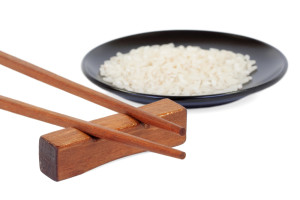There was an interesting editorial item in The Economist that unintentionally says a lot about the impact of government intervention on industry. In the last generation, the average number of working hours needed to purchase an automobile, clothing or other consumer goods has fallen by 50%. There are only three industries that completely defy this trend; healthcare, education and housing.
 For hundreds of years, the Chinese have sarcastically referred to secure bureaucratic jobs as an “Iron Rice Bowl.” Whether you worked in the Emperor’s Palace or for the Communist Party, being a faceless worker in a large faceless organization may not have brought wealth, but it also meant you wouldn’t starve.
For hundreds of years, the Chinese have sarcastically referred to secure bureaucratic jobs as an “Iron Rice Bowl.” Whether you worked in the Emperor’s Palace or for the Communist Party, being a faceless worker in a large faceless organization may not have brought wealth, but it also meant you wouldn’t starve.
Why are Healthcare, education and housing exempt from long term trends? Since 1973, the purchasing power of the median wage has remained essentially flat after adjusting for inflation. During that time, the real cost of a higher education rose by over 500%. That comes as no surprise to anyone with a college-aged child. The top-tier state university that I attended in the 70’s cost about $3,000 a year for tuition, room and board. Today it is more like $40,000.
Inflation over the same time has raised the average cost of a dollar’s worth of goods to $5.32. A dollar’s worth of medical treatment, on the other hand, now costs $11.21. As a percentage of all goods and services in the nation (GDP) healthcare has risen from 7% to 16% of our economy in that time.
Housing has risen and fallen with the economy, and except for rental rates in major cities is currently considered to be at the high end of the affordable range (around 30% of household income). The US economy as a whole, however, is working through its 8th year of recovery from the subprime lending fiasco and subsequent collapse of real estate values.
The three Iron Rice Bowl industries of healthcare, education and housing are still competitive on a microeconomic scale. Businesses grow and fail. People make fortunes and lose jobs. From a macroeconomic perspective, however, these are industries that the government deems critical for social reasons. That government support has distorted market forces to the point where those three sectors no longer respond to normal supply and demand elasticity.
This is not just a phenomenon of the Obama administration. For forty years successive Federal Governments have embraced the cause of social engineering with tax revenues. The result is a generation of college students laboring under a trillion dollars of too-easy-to-incur debt. It is a health care market that is squeezing wages and business profits. It is a housing market that caused the biggest downturn since the Great Depression. All of these cripple, rather than support, a strong middle class.
During that time Americans have come to accept that government should play a major role in the financial support of the Iron Rice Bowl industries. Perhaps it is time we stepped back and considered the results.
For a pdf of this or any of my columns, please contact me at jdini@mpninc.com

11 Responses to Iron Rice Bowls and the Impact of Government Funding